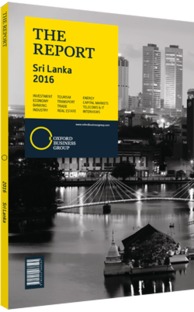Hanif Yusoof, Group CEO, ExpoLanka Holdings: Interview

Interview: Hanif Yusoof
How can Sri Lankan importers and exporters become more competitive in international markets?
HANIF YUSOOF: Facilitating greater visibility of Sri Lankan firms and brands abroad is very important and is partly done through national initiatives like promoting Ceylon tea, Ceylon cinnamon and tourism. These are all areas in which both the public and the private sector can work together. Take, for example, the maritime logistics and port sector. Sri Lanka needs to increase Colombo Port’s visibility and its unique advantages and undertake joint marketing to attract global logistics and manufacturing firms.
Ease of doing business is also a key area in which Sri Lanka can make significant improvements. For example, in the World Bank’s “Doing Business” index, Sri Lanka is ranked 158th out of 189 countries in terms of paying taxes, 165th in enforcing contracts and 131st in registering property. All this affects the cost of doing business in Sri Lanka and the competitiveness of domestic firms in international markets. In line with this is policy consistency, which is a major problem that affects the competitiveness of Sri Lankan firms in regards to, for example, taxation, rules and regulations or exchange rate policy. Therefore, a consistent policy will be key to businesses.
Countries are racing to sign free trade agreements (FTAs). The products of countries not party to trade agreements are discriminated against at the point of entry into the importing country and are subject to taxes, whereas other countries party to an agreement get duty-free access. Therefore, to maintain its competitiveness, Sri Lanka is compelled to enter into FTAs with key trading partners like India and China. Joining the EU’s Generalised Scheme of Preferences Plus scheme would also help Sri Lankan exporters, especially in the apparel sector. The visa process should also be streamlined to allow more foreigners to obtain residency, and Sri Lankan entrepreneurs who are overseas should be encouraged further.
What factors in 2015 influenced cargo volumes?
YUSOOF: The volumes handled by Colombo Port have increased by about 1m twenty-foot equivalent units because of the new terminal in Colombo South Harbour. Further, Hambantota Port, although still operating on a small scale, has facilitated the trans-shipment of vehicles. However, given the significant capacity expansion at Colombo Port, with two additional terminals, Sri Lanka needs to focus more of its attention on attracting new businesses.
Sri Lanka’s export sector has been stagnating at around $11bn and growth has been sluggish. There have not been major shifts in product composition or market composition. This is largely due to the slowing down of demand from main export destinations. A slowdown in trade was experienced by nearly all the countries in the world in 2015. Imports into the country, meanwhile, received a boost in the first eight months of 2015 due to the relaxing of import duties, especially for vehicles. However, the government is likely to put the breaks on this because it has led to a widening of the trade deficit.
Do you expect to see any legislative changes to agency structure under the new administration?
YUSOOF: Sri Lanka needs to review legislation that governs trade and investments in the country. This has been highlighted by many as an important area, although it can be politically sensitive, with many strong lobby groups resisting change. Combatting this largely depends on the political will of the government. It is difficult to predict what will happen at the moment because the government has yet to roll out its national economic strategy for the country.
The concept of Sri Lanka as a hub requires that large players be invited to set up regional headquarters, both maritime and aviation, and this is not possible with a 40% local ownership structure for shipping and a local airlines monopoly on cargo handling.
You have reached the limit of premium articles you can view for free.
Choose from the options below to purchase print or digital editions of our Reports. You can also purchase a website subscription giving you unlimited access to all of our Reports online for 12 months.
If you have already purchased this Report or have a website subscription, please login to continue.

